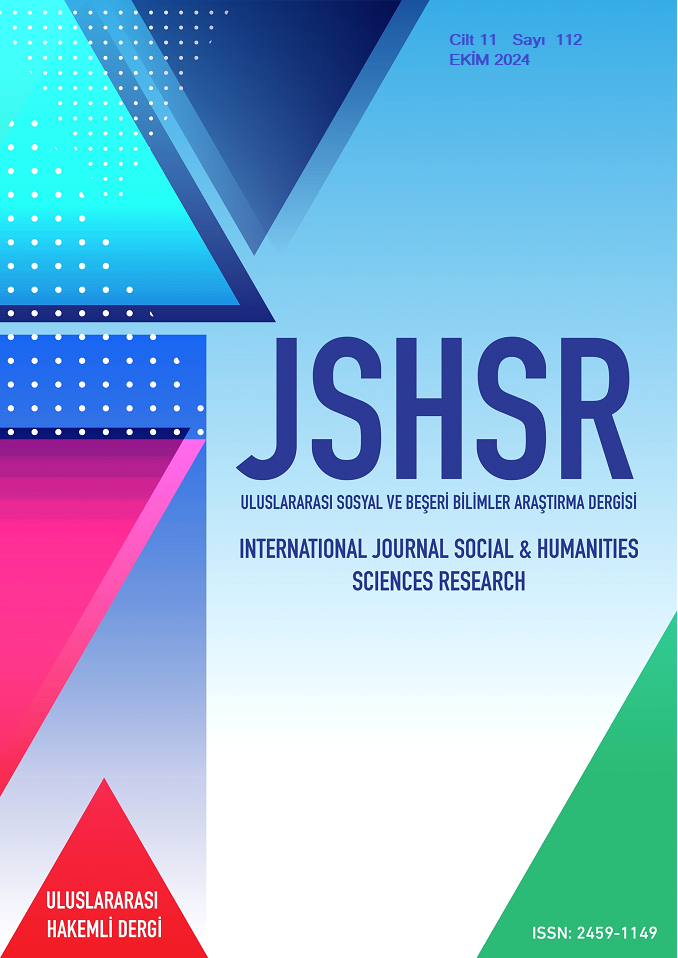The Cultural and Artistic Revolution Presented to the World by Sultan Malikshah in the Middle Age
DOI:
https://doi.org/10.5281/zenodo.14020383Keywords:
Sultan Malik Shah, Nizamiye MadrasahsAbstract
This study deals with the important developments in the fields of science, culture and art during the reign of Sultan Malik Shah. Sultan Malik Shah, who ruled between 1072-1092, gave the Great Seljuk State its most brilliant period. With the importance he attached to education and science, Malik Shah ensured the establishment of Nizamiye Madrasahs and pioneered the spread of education and scientific research in the Islamic world through these madrasahs. The Jalali Calendar, developed under the leadership of Omar Khayyam during the reign of Sultan Malik Shah, stood out as the most advanced work of the period in the field of astronomy. The reign of Malik Shah was also a period of great development in Persian literature. The Sultan contributed to the increase in literary production with his support for poets and writers. In the field of architecture, works such as mosques, madrasahs and caravanserais were built in many cities, especially in Isfahan. It is seen that these buildings contain elements reflecting the Seljuk art and cultural richness. Sultan Malik Shah's support for art, science and education left deep traces not only in his period but also in the Islamic world afterwards. This study analyses these important cultural and scientific activities during the reign of Malik Shah
References
Ağırnaslı, N. (2011). Büyük Selçuklu Devlet Adamlarının Bilime ve Bilim Adamlarına Bakışı. II. Uluslararası Selçuklu Sempozyumu, Konya, 435-453.
Aksu, B. T. (2018). Sekizinci Yüzyildan Günümüze Takvimlerimiz. Uluslararası Türk Lehçe Araştırmaları Dergisi (TÜRKLAD), 2(1), 382-413.
Âzâdyân, Ş., & Hekîmî, H. R. (2020). Selçuklular ve Fars edebiyatını himayesi [Çev. Ç. Kaska]. MUTAD, 7(2), 507–522.
Eğilmez, S. (2014). Farsi Şairlerin Gözünden, Selçuklu Sultanları. Atatürk Üniversitesi Sosyal Bilimler Dergisi, (52), 113-124.
Gökmen, G. (2019). Emîr Mu’izzî Dîvânı’nda Sultan Melikşâh, Nizâmülmülk, Fahrülmülk, Terken Hâtun ve Mucîrüddevle İçin Yazılan Mersiyeler. Çanakkale Araştırmaları Türk Yıllığı, 17(26), 131-148.
Göksu, E. (2018). Bilge Vezir Nizam’ül Mülk. 1st Edition, Erdem Yayınları, İstanbul.
Hillenbrand, R. (2014). Architecture and politics: The north and south dome chambers of the Isfahan Jāmi‘. In E. Herzig & S. Stewart (Eds.), The age of the Seljuqs (Vol. 6). I.B. Tauris.
Kaya, B. (2019). Nizamiye medreseleri ve eğitim geleneği. Çekmece İZÜ Sosyal Bilimler Dergisi, 7(14), 49–66.
Kaya, S. (2017). Ömer Hayyâm ve Isfahan Rasathanesi’nde Astronomi Çalışmaları. Cappadocia Journal of History and Social Sciences, 9, 510-516.
Kayadibi, F. (2001). İslam dininin eğitime verdiği önem. İstanbul Üniversitesi İlahiyat Fakültesi Dergisi, 4, 33-44.
Kayani, A. (2013). Naghdi bar adabiyat-e Iran dar asr-e Salajeghe. Tehran: University of Tehran.
Nizami Aruzi, S. (1955). Chahar Maqala (M. Qazvini, Ed.). Tehran: Tehran University Press.
Ocak, A. (2009). Selçuklu Medreselerinin Mağrip ve Endülüs üzerindeki etkileri. Turkish Studies, 4(3), 1622-1647.
Okumuşlar, M. (2008). Ehl-i Sünnetin kurumsallaşmasında Nizamiye Medreselerinin etkisi. Marife, 1, 137-148.
Özaydın, A. (2007). Nizamiye Medresesi. TDV İslam Ansiklopedisi. https://islamansiklopedisi.org.tr/ nizamiye-medresesi
Safa, Z. (1997). Tarikh-e Adabiyat dar Iran (Vol. 4). Tehran: Amir Kabir.
Selçuklu Belediyesi & Konya Aydınlar Ocağı. (2014). Büyük Selçuklu Mirası: Mimari (O. Eravşar & H. Karpuz, Ed.; K. Branning, İngilizce Ed.). İstanbul: Kristal Matbaacılık.
Simon, J. L., Bretagnon, P., Chapront, J., Chapront-Touzé, M., Francou, G., & Laskar, J. (1994). Numerical expressions for precession formulae and mean elements for the Moon and the planets. Astronomy and Astrophysics, 282(2), 663-683.
Tan, P. K. (2020). Câmiʻu’t-Tevârîh’te Selçuklu Devlet Adamlari Hakkindaki Şiirlerin Değerlendirilmesi. Sosyal Bilimler Araştırmaları Dergisi, 15(1), 49-57.
Unat, Y. (2011). Selçuklularda Astronomi Bilimi. II. Uluslararası Selçuklu Sempozyumu, Konya, 19-23.
Zarrinkoub, A. (1974). Naghdi bar adabiyat-e Iran. Tehran: University Press.
Downloads
Published
How to Cite
Issue
Section
License
Copyright (c) 2024 INTERNATIONAL JOURNAL OF SOCIAL HUMANITIES SCIENCES RESEARCH

This work is licensed under a Creative Commons Attribution 4.0 International License.


